Ranching History in the Mojave Preserve

Grazing of non-native livestock has occurred on most of the land that is now the Mojave National Preserve at one time or another over
the past 150 years. Livestock was present in the east Mojave in association with the earliest Euro-American uses of the desert. Travelers
over the Mojave Road almost always had some stock with them, and grazed them as they crossed the desert. Several times, herds of hundreds
of cattle or sheep were driven over the route across the Mojave either to resupply
Fort Mojave on the
Colorado River or to move livestock
to fresh range in New Mexico and Arizona. Military outposts constructed along the Mojave Road conducted small-scale grazing activity, to
supplement the soldiers' food supply. [11]
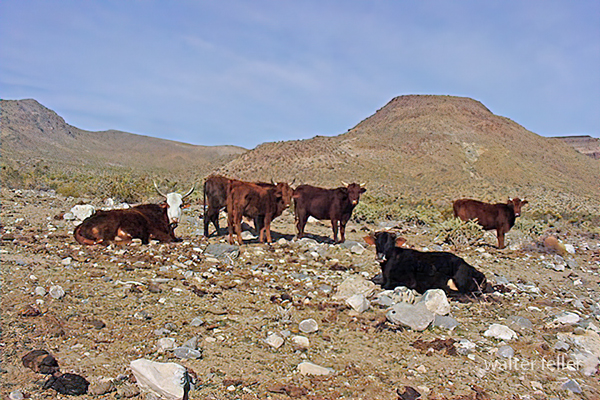
Entrepreneurs took advantage of the open range and ready market in the form of miners and later railroad workers by setting up several
ranches in the years from about 1875 to the end of the nineteenth century. George Briggs and LeRoy Blackburn, two of the future partners
of the Rock Springs Land & Cattle Company, set up their individual ranches around 1875, with headquarters at
Marl Springs
and Government Holes, respectively. John Domingo raised work horses on a ranch near the
Bonanza King mine starting in the early 1880s,
and Daniel Kistler raised beef for sale near what is now known as Kessler Spring at about the same time. [12]
In 1894 Blackburn and Briggs, along with other investors, merged their holdings to form the Rock Springs Land & Cattle Company, with
headquarters at Barnwell, the northern terminus of the newly constructed
Nevada Southern Railway. This
move highlighted the fact that
while local consumption by miners in the area was important to the firm, so too was the capability to transport cattle to other markets
via the railroad. The Rock Springs outfit, like other ranchers in the area, grazed their cattle on public land without fences. They
moved aggressively to purchase or trade for ownership of water rights, the possession of which enabled de facto control of the surrounding
range. At various times, the company had more than 10,000 cattle on their fifty square mile range. [13] The company came into conflict with
homesteaders who staked claims in prime grazing territory after 1910. Cattle trampled homesteaders' crops (sometimes at the deliberate
urging of the cowboys) and the company denied homesteaders access to water; homesteaders retaliated by helping themselves to free beef. A
shootout at Government Holes in 1925 was the final straw for many of the homesteaders who had not yet left. [14]
Sidney E. "Boots" Yates arrived in the Valley Wells area in 1894, alone with 27 head of cattle, and set up a ranch of his own. With hard
work, good forage years, and a job as foreman of the Rock Springs Company that provided a steady income, Yates worked steadily and built
up his ranch. After World War I, Yates started his nephew, L. E. "Boy" Williams, in the cattle business as well. Yates passed away in 1923
and his widow Bessie continued to run the Valley Wells ranch. [15]
John Domingo raised horses on his ranch near
Providence until 1918, when he sold his holdings. The ranch soon came under control of the
partnership of J. N. Sanders and W. W. "Wash" Gibson, who stocked the ranch with cattle and called it the 7IL. Sanders and Gibson hired
Frank Murphy, a
homesteader from the Lanfair area, to direct the day-to-day operations in the early 1920s.
A massive drought in the late 1920s, culminating in 1928, contributed to changes on the Mojave range. The Rock Springs Land & Cattle
Company dissolved under the pressure. Most of the cattle had perished on the range, but the remainder were rounded up and sold in urban
markets. In September 1928, the northern part of the Rock Springs range was sold to Bessie Yates and "Boy" Williams. The Rock Springs lands
in Nevada were given to long-time ranch superintendent John Woolf, who promptly sold the property to Hollywood western movie star Rex Bell,
who together with his wife Clara Bow, lived and worked on the ranch they called the Walking Box. In September 1931, the remainder of the
Rock Springs Land & Cattle Company's holdings were sold to a group headed by Claud Halsell, Sr., who took complete control within a year
of the ranch they called the OX. [16] Additionally, Gibson and Sanders sold the 7IL Ranch to Mark and Mary Pettit in 1929.
The late 1920s and 1930s were years of flux in the cattle business in the east Mojave, not only because of the substantial drought, but
also due to the passage of the Taylor Grazing Act in 1934. The Taylor Grazing Act compelled individual ranchers to clearly delineate and
fence their ranges, and required grazers to pay fees to the government for forage consumed by each animal on public lands. Mark and Mary
Pettit sold the 7IL that year, just prior to the signing of the act, in part because of concerns over impending government regulations. The
ranch was sold again in 1938 to Herbert and Anson Murphy, sons of Frank Murphy who had operated the ranch in the early 1920s. [17] The
Yates/Williams partnership that purchased part of the Rock Springs range dissolved in 1937 as a result of the need for smaller holdings
that could be fenced, resulting in the creation of the Kessler Springs Ranch for Williams and the Valley View Ranch for Yates. The Valley
View was sold to Fred Twisselman in 1940, while the Valley Wells ranch remained in the hands of Sarah Yates Miles, daughter of "Boots" Yates,
and her husband, Wade Miles. Fleetwood "Fleet" Southcott Sr. came to the Gold Valley area in 1931, after losing his fortune in the Great
Depression, and staked a homestead in Gold Valley with an eye toward developing a ranch. [18]
The Taylor Grazing Act caused changes in the ranching landscape in the Mojave, by requiring ranchers to fence their ranges and develop
multiple water sources, so that the burden on any one part of the range was lessened. "Boy" Williams and Claud Halsell both constructed
large numbers of corrals, improved water sources, and built many miles of fence to bring their Kessler Springs and OX Ranches into
compliance. "Fleet" Southcott saw the act as an opportunity to develop a ranch of his own, and leased an allotment in the Gold Valley area
before Halsell was able to do so. [19]
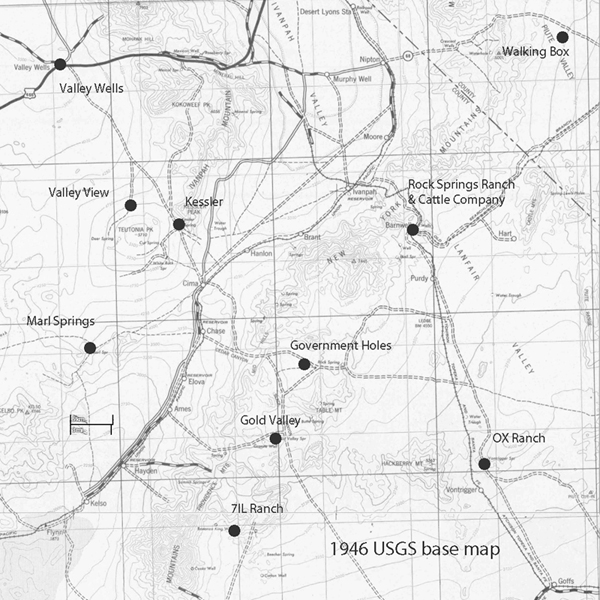
During the years from the 1940s to the passage of the California Desert Protection Act in 1994, ranching in the area evolved, but remained
rooted in old-fashioned methods that worked better on the tough range than modern agribusiness techniques. "Slim" Skinner and his father-in-law,
Fred Twisselman, bought the Valley View from Bessie Yates in 1940. Unlike many of the "cow and calf" operations in the desert, such as the OX
and Kessler Springs ranches, the Valley View was worked as a steer operation, involving greater risk, but potentially greater profit. Skinner
retired in the early 1980s and sold the ranch to Andy Anderson of Montana. [20] In 1960 the Murphy brothers sold the 7IL ranch to their nephews,
Howard and Jerry Blair, the descendants of whom still own and operate the ranch. [21] "Boy" Williams sold the Kessler Springs Ranch in 1942,
and it passed through the hands of several often-absentee owners until it fell under control of part-owner Gary Overson in 1969. Overson was
raised in the east Mojave, first working for the OX Ranch at eleven years of age. Through hard work and a shrewd sense for expansion, he
bought out his partners at Kessler Springs within a decade.
Claud Halsell retained ownership of the OX Ranch until 1946, during which time he added a tremendous number of improvements, fenced most of
the range, added private lands to the ranch holdings, and moved the ranch headquarters from Barnwell to Ledge, along Lanfair Road. Halsell's
successors, the partnership of Waldo Bozarth and Oscar Rudnick, owned the ranch until 1955 and built a herd from 1,000 to 5,000 animals during
that time. Ed Eldridge purchased the ranch from Bozarth and Rudnick, and constructed a large number of fences, corrals, and pipelines to
facilitate expansion of his ranching operation. When Eldridge was ready to retire, he sold the OX to Gary and Linda Overson in 1986, giving
the Oversons direct control over most of the Mojave range. Later, the Oversons also managed the Valley View and Valley Wells ranches for Richard
Blincoe, an Idaho-based agricultural businessman. [22]
The lands of the east Mojave have been subject to ranching for profit for more than 125 years, and in that time have indelibly changed. The
key to ranching in the Mojave is water, and commercial ranches have developed extensive water systems which are also used by wildlife. Though
no definitive data exists, the numbers of both native and non-native species may have been enhanced by the long-term availability of these water
sources, making it difficult to discover what pre-ranching levels of wildlife were like. In the same way, long-term ranching has quite possibly
been responsible for the creation of some of the Preserve's most magnificent landscapes, the Joshua tree forests of Cima Dome and Lanfair
Valley. Biologist Harold Avery noted that cattle grazing in the Mojave had the effect of increasing the number of shrubs, and biologist Steve
Brittingham noted that shrubs provide microclimates that nurture the development of
Joshua trees. [23] Jim Cornett, a biologist with the
San Bernardino County Museum, also explained the connection between cattle grazing and increased Joshua tree density as a product of the shelter
that unpalatable shrubs give to the infant trees. [24] An analogy, focused on the role of subtle human effects in producing landscapes that are
seemingly "natural," can be drawn between Mojave's Joshua tree forests and the forests of giant sequoias in Sequoia National Park, where
researchers in the 1970s realized that the huge trees were largely the product of the Native American practice of setting deliberate fires. Both
the sequoias and Mojave's
Joshua tree forests
are beautiful attractions, seemingly natural, that were in reality partially formed by human
actions over a long period of time. [25] In the cultural history of the eastern Mojave and in the landscape itself, the continuous presence of
cattle grazing in Mojave National Preserve has left an important legacy.
From Neglected Space To Protected Place:
An Administrative History of Mojave National Preserve
by Eric Charles Nystrom
March 2003
https://www.nps.gov/parkhistory/online_books/moja/adhi2.htm
Ranchers
Ranches in the Mojave Desert
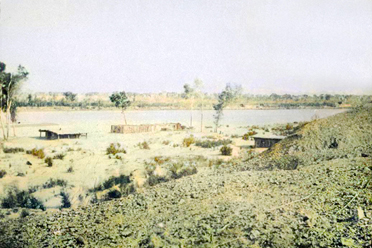
Fort Mojave
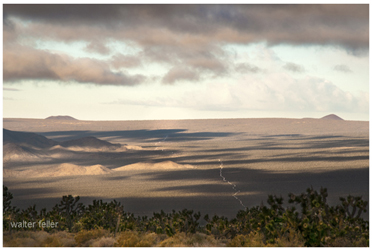
Mojave Road

Walking Box Ranch
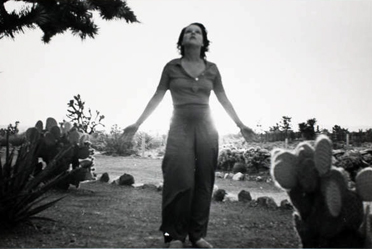
Clara Bow